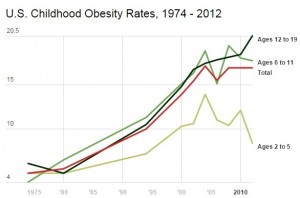
In a breakthrough discovery, researchers at the University of Adelaide have revealed how damage from obesity in mice is passed from a mother to her children, and also how that damage can be reversed.
The findings, by a team led by the University’s Robinson Research Institute, have major implications for the future of fertility research and are published today in the journal Development.
“It’s now well established that obesity in females leads to very serious fertility problems, including the inability to conceive. Obesity can also result in altered growth of babies during pregnancy, and it permanently programs the metabolism of offspring, passing the damage caused by obesity from one generation to the next,” says lead author Associate Professor Rebecca Robker from the Robinson Research Institute.
“In our laboratory studies, we’ve been able to unravel a key mechanism that leads to this multi-generational damage, and we’ve found a way to stop it happening,” Associate Professor Robker says.The research team found that obesity leads to a particular stress response that causes damage to the mitochondria, which are critical energy-producing ‘organs’ within living cells.
“All of the mitochondria in our bodies come from our mother. If the mother is obese, this produces stresses that lead to reduced transmission of mitochondria to the offspring. We found that the eggs of such mothers lead to heavier-than-normal fetuses with greatly reduced amounts of mitochondrial DNA and other obvious signs of damage,” she says.
Having pinpointed the problem, Associate Professor Robker and her colleagues attempted to stop it from occurring.
“Once we had identified the type of stress involved, we used compounds known to alleviate that stress in the cells. In particular, we were interested in compounds that are also being tested in diabetes clinical trials,” Associate Professor Robker says.
“These compounds were highly successful in preventing the stress response, thereby stopping the damage from obesity being passed onto the offspring. It restored egg quality, embryo development and mitochondrial DNA to levels equivalent to those of a healthy mother. Effectively, the problem was fully reversed.”
Associate Professor Robker says the results of this work point towards a potential future therapy to restore “natural” fertility in obese women, and to prevent multi-generational damage passing onto their children.
“Importantly, this work further highlights that a women’s nutritional state prior to getting pregnant matters greatly. Women are urged to eat healthy diets to optimize their chances for a healthy conception and to reduce the potential impact on their child’s future health,” she says.
This research is supported by the National Health and Medical Research Council (NHMRC).
via Damage from obesity passed to offspring, but impact of obesity on fertility can be reversed, mouse study finds — ScienceDaily.



